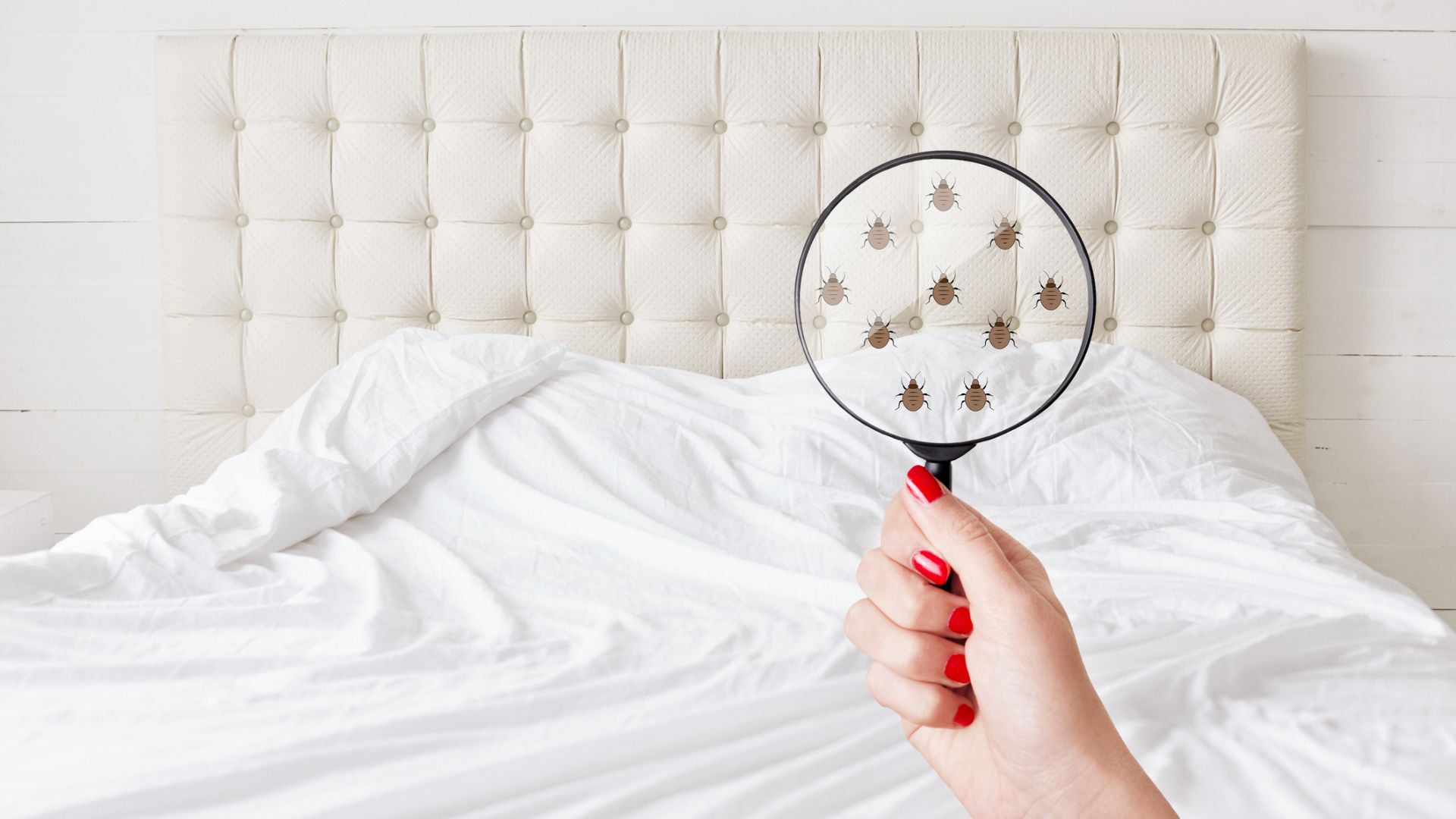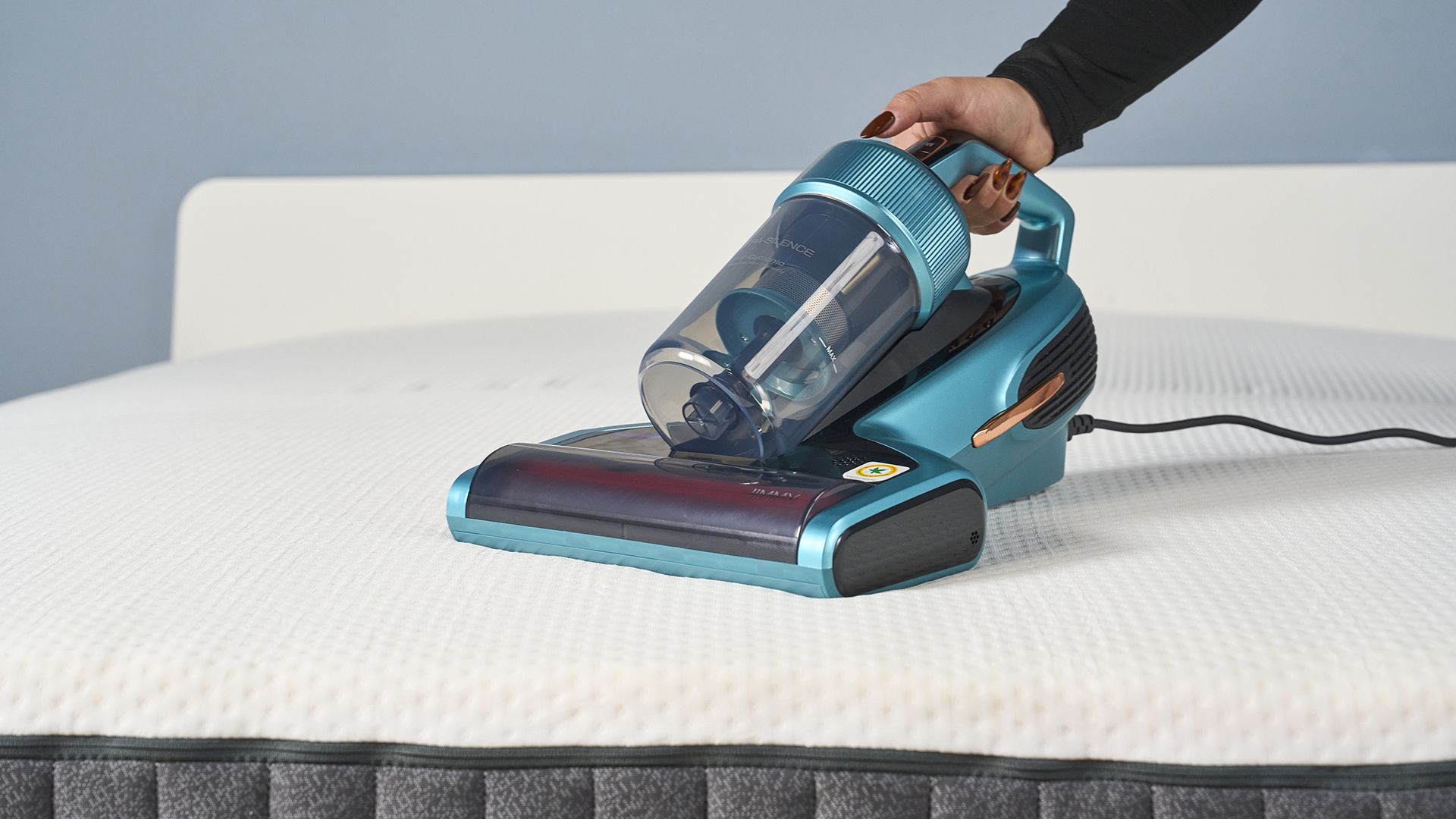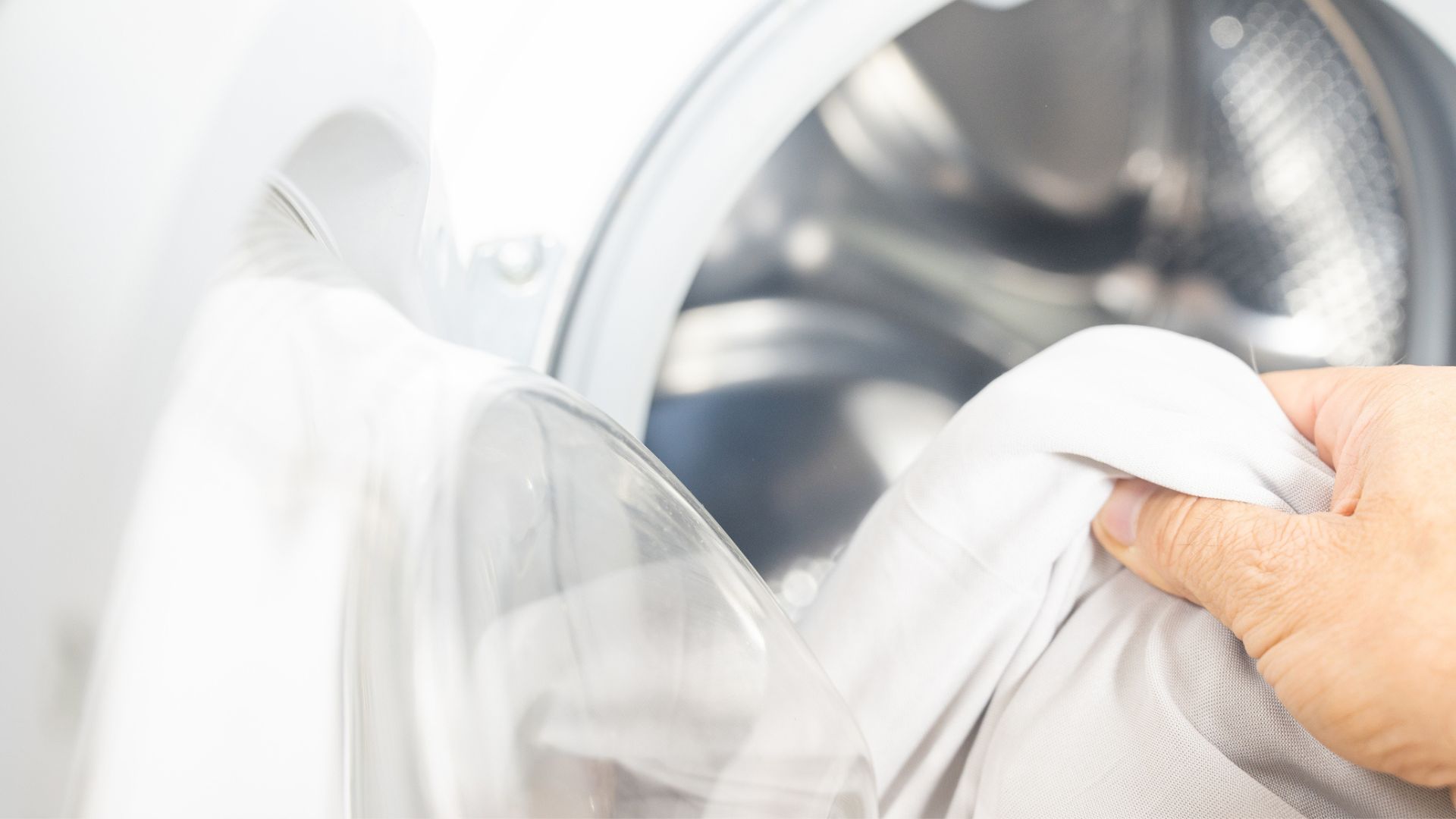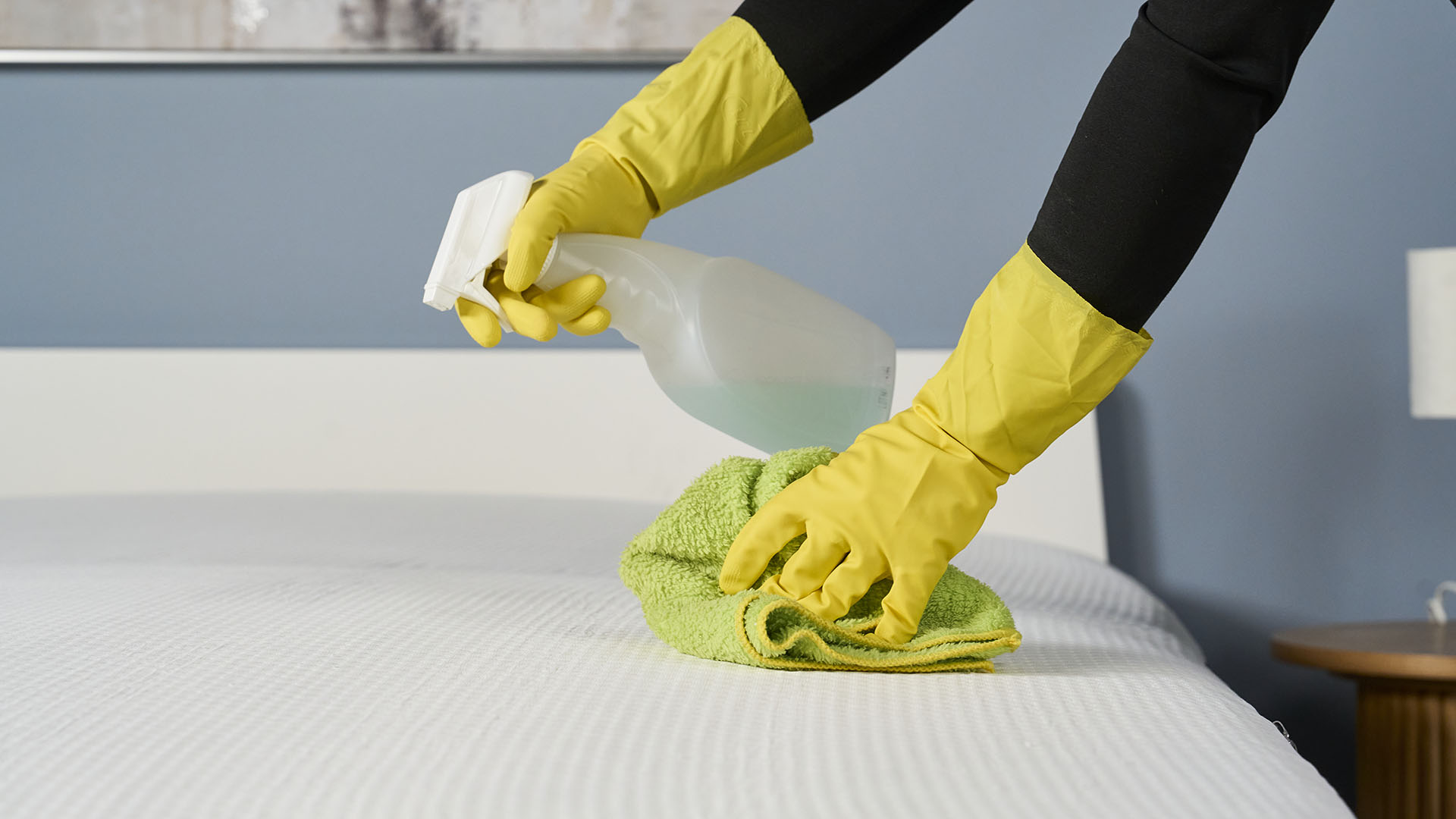3 home remedies that can actually get rid of bed bugs
These household products treat bed bugs — and you already own them

Worried there are bed bugs in your mattress? You can find numerous hacks for bed bug removal — everything from moth balls to vaseline — but we've sorted through the tips and tricks to find the household products that can actually be used to get rid of bed bugs.
The most efficient method for dealing with bed bugs is prevention, which is why we recommend once you've found the best mattress for your sleep style, you keep it covered in a mattress protector, or encasement, and clean it regularly.
But bed bugs are both tiny and incredibly skilled at hiding. If you think bed bugs are in your mattress, these are the household items you're likely to own that actually can kill bed bugs. (And if you want to stop bed bugs in the first place, these are the perfect conditions bed bugs need to thrive in your mattress.)
3 household objects to get rid of bed bugs
1. The freezer
Why it works: Freezing can be an effective method for killing bed bugs and the freezer is the most accessible source of low temperatures. This method can be used to help contain a bed bug outbreak before it gets started.
How to use it to get rid of bed bugs: Before you begin, empty the freezer of any food or perishable items. We recommend placing the afflicted materials, such as pillows and bedding, in a sealable bag and storing them in the freezer for at least four days (longer, if possible.)

Make sure your freezer is set to 0 degrees — any warmer and it won't be as effective at killing bed bugs. You can find refrigerator thermometers on Amazon to double check the temperature.
Follow this with a stint in the washing machine and a quick vacuum, to be sure even the dead bed bugs are banished. Of course, this method isn't suitable for a mattress but it can be used if you've been traveling and you're worried you've bought bed bugs home from the hotel in your suitcase.
Sign up to get the BEST of Tom's Guide direct to your inbox.
Get instant access to breaking news, the hottest reviews, great deals and helpful tips.
2. The vacuum cleaner
Why it works: The powerful suction of the best vacuum cleaners can dislodge bed bugs (and their eggs) from hiding places in and around the mattress. And as a bonus, you'll be busting dust at the same time.
How to use it to get rid of bed bugs: We recommend regularly vacuuming your mattress as part of your cleaning routine, but if you suspect a bed bug outbreak, this is one of the best ways to deal with the problem fast.

When vacuuming to remove bed bugs, pay close attention to the corners and seams of your mattress, as bed bugs love to hide in these dark places. Vacuum around the bed as well, including the bed base and the underside of the mattress.
Once you've finished, dispose of the contents of the vacuum in an outside trash can. Do not get rid of it in the house, as vacuuming primarily removes bed bugs, rather than killing them. If you empty the vacuum in your household waste, the bed bugs might make their way back to your mattress.
3. The washing machine
Why it works: Heat is another effective way to eliminate bed bugs. The most convenient source of heat (that won't destroy your sheets) is the washing machine.
How to use it to get rid of bed bugs: Strip the affected bedding and place it in a sealable bag before transferring it to the washing machine. To effectively remove bed bugs, we recommend washing your bedding at a high temperature of at least 140 degrees F for a minimum of 90 minutes.

Once washed, it's time for another application of heat. Either use your dryer on a high setting or place the items in direct sunlight to dry them quickly and kill off any remaining bed bugs.
Signs of bed bugs in your mattress
Bed bugs are small and skilled at hiding, so the first sign of infestation is rarely an actual bug. Small red or brown spots as well as clusters of dark specks are common signs of bed bugs in your mattress, indicating the places that bed bugs have been during the night.
A new, musty odor to your mattress is another sign. Dead bugs feed on blood and this diet can result in a lingering smell similar to iron. And if you've started waking up with itchy bites, bed bugs might be the cause.
To check for bed bugs in your mattress, use a torch light to inspect the corners and seams. While you might not spot any live bugs, they do shed their skin as they grow. These translucent casings are a dead giveaway that your mattress has bed bugs.
If you think you have bed bugs but you're not sure, we recommend following the steps above alongside contacting a mattress cleaning professional. A bed bug infestation can be a health risk, so it's better to be cautious.
When to contact mattress cleaning professionals for bed bug removal
Unfortunately, bed bugs are incredibly hard to get rid of once they've made a home in your furnishing.
The above methods can limit a bed bug outbreak and if you've managed to catch the problem early enough, you might be able to nip it in the bud. (You can also use tea tree oil to treat bed bugs in the early stages of an infestation.)
However, the most effective method to deal with a bed bug infestation is to contact a professional extermination service.

Despite the name, bed bugs don't just infect your mattress, and if you suspect an outbreak it's important to inspect the entire house. Use the vacuum to clean the corners, seams and carpets, while removable soft furnishings should go in the washing machine (following the same guidelines as above.)
One of the best ways to prevent a bed bug outbreak is with a mattress encasement. This zippered mattress protector covers the entirety of the mattress so if you do bring home a few bed bugs, they're less likely to become embedded in the inner materials of your bed before you've had a chance to clean.
For thorough and efficient bed bug removal, a professional mattress cleaning service is the best option. They can ensure every trace of the bed bug infestation is removed, so you don't have to worry about these minuscule pests.

Ruth is a staff writer at Tom’s Guide, covering all things mattress and sleep. She has a deep interest in the link between sleep and health, and has tried enough mattresses to know the right bed really can make a difference to your wellbeing. At Tom’s Guide she writes to help people sleep better, from how-tos to the latest deals to mattress reviews, and has interviewed an array of specialists who share her passion. Before joining the team at Tom’s Guide, Ruth worked as a sleep and mattress writer for our sister website, TechRadar.
You must confirm your public display name before commenting
Please logout and then login again, you will then be prompted to enter your display name.
